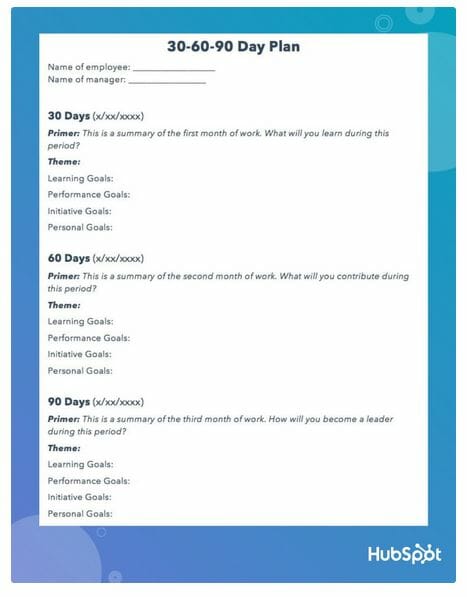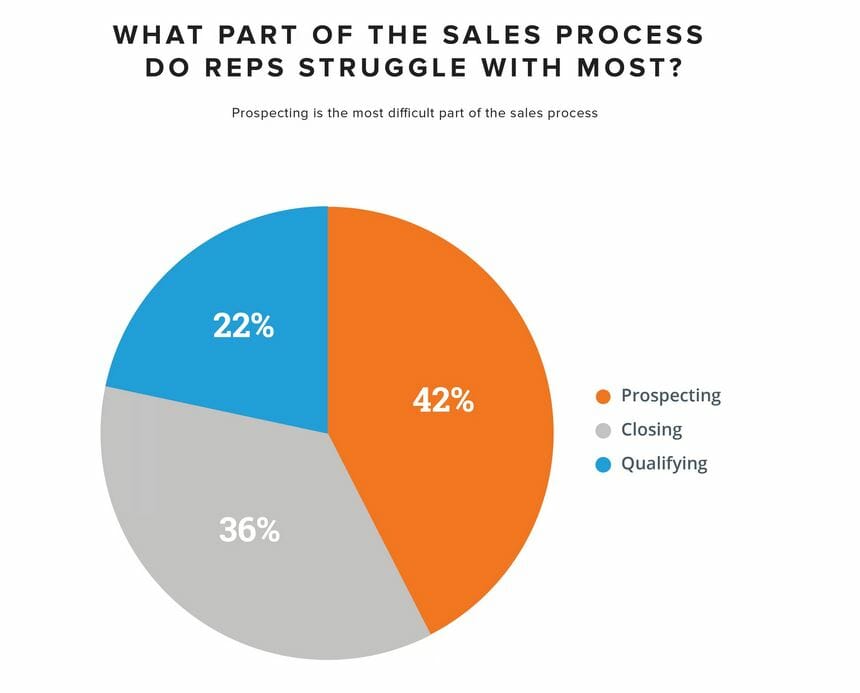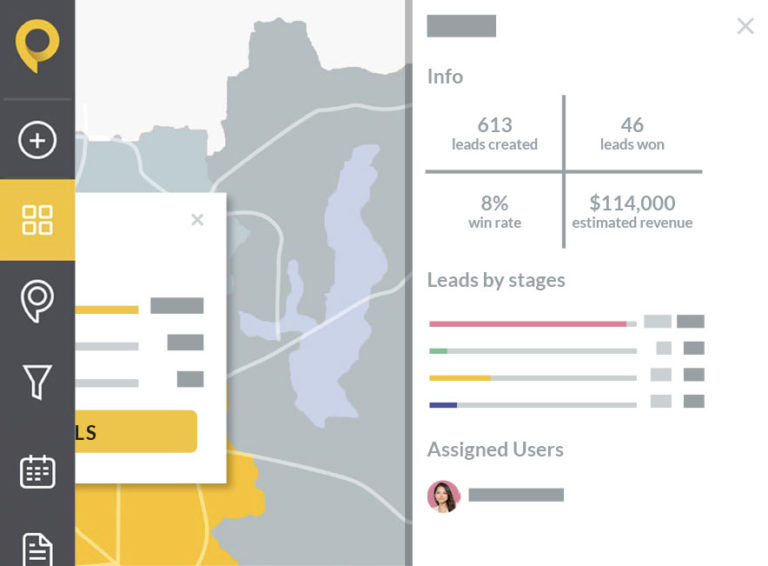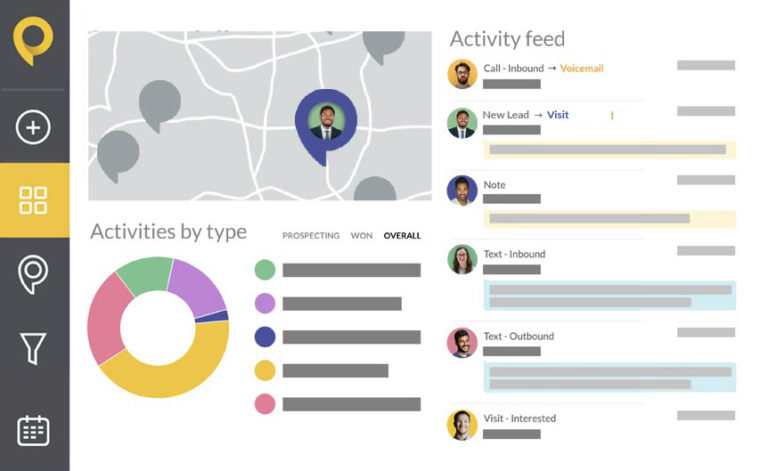The global telecommunications market is poised for huge growth. In fact, it’s forecasted to grow to $13.76 billion by 2031.
How big is your slice of that pie?
Ultimately, that will depend on how successful you are as a sales rep.
In telecom sales, the most valuable reps are the ones that get out the door and talk face-to-face with their customers. They can use the hard work they’ve put into researching and understanding their product to answer questions in person and help customers find the best solution for their needs.
While there are many moving pieces in the sales process, there are a handful that typically prevent telecommunications sales reps from reaching their true earning potential.
We’ll look at each one in this article, and then cover 10 ways you can level-up and succeed.
Key Responsibilities of Telecommunications Sales Positions
So, what exactly do people in telecom sales positions do?
First, telecom sales managers are the ones that organize the team and get it ready for action. They take on the responsibility of hiring and training new sales reps to create the best possible team.
These sales managers also equip teams with the best tools and keep track of the team’s performance as a group and as individuals, providing help when necessary and pushing them to achieve more.
For telecom sales reps, the job is very similar to other sales roles.
To start, they’ll need to prospect for new potential customers and qualify them to find the ones that really fit their business. Next, they’ll develop a personalized pitch that takes into account the needs and circumstances of each prospect.
For many reps, a lot of time is also spent following up with those prospects, answering questions, overcoming objections, and helping them find the perfect solution for their problems.
Why Telecom Sales Reps May Not be Earning to Their Full Potential
While the telecommunications sales market is full of potential earnings, some sales reps are still not raking in the cash.
Why?
There are some common reasons why telecom sales reps might not be earning the amount they expected:
- Sales reps are unprepared to address objections.
- Reps aren’t conducting effective qualification.
- There’s no established strategy for assigning sales territories.
- Sales reps are unprepared for the objections their leads raise.
- Reps don’t follow up with their qualified leads.
- The team lacks a system for tracking rep performance.
- Sales reps are undereducated in their product, how it works, and how it solves problems for their customers.
- Sales training isn’t an ongoing process.
Do you see yourself reflected in this list? If so, don’t worry: Each of these common sales issues has a solution.
In fact, if you’re looking to level-up your sales game, we’re going to discuss 11 ways that you can improve your skills and reach your earning potential.
11 Ways to Boost Your Telecom Sales Pipeline
1. Set a 30-60-90 Day Plan
One of the biggest reasons that sales reps fail to reach their potential (or their quota) is that they lack a viable plan to do so.
That’s where the 30-60-90 plan comes in. This tool is normally used in onboarding, but it can also help an established sales rep align themselves with the team, and work forward toward the goal of closing more sales.
It normally looks something like this:

(Source)
Basically, this involves separating out goals for the short term and the long term. What can you accomplish in 30 days? In 60? In 90?
Write down these goals, and measure your success as you move forward. That way, you’ll keep progressing.
2. Know the Customer Better Than They Know Themselves
Who are your customers?
If you can’t answer that question clearly, it’s time to get back to your customer personas.
These personas are built like profiles of real people. They include information such as demographics, company information, pain points, goals, challenges, shopping preferences, data on where they go to gather information, and so forth.
Check out this example from L&T:

Ultimately, you need to know your customers and the challenges they face every day. Then you’ll be able to appeal to them on a personal level.
Using customer personas allows you to view your leads not as just numbers on your sales charts, but as real people that you can provide solutions for.
3. Build Transferable Product Knowledge
Other than people who work in telecommunications, who really understands how this stuff works?
The majority of your customers probably don’t understand the inner workings of the telecom services and products they use. More than that: They don’t really want or need to understand.
Here’s where you, the telecom sales rep, come in: You must become the friendly guide who leads customers to the products that will solve their problems most efficiently.
This requires you to have two important skills:
- An encyclopedic knowledge of the products you sell and how they work.
- The ability to transfer that knowledge successfully.
Don’t bombard leads with unimportant details about the inner workings of the telecom world. Leave the technical jargon at the office, and focus on clearly explaining how your product solves a problem.
By doing this, you can become the helpful consultant and confidant that customers call when they have an issue they can’t solve.
4. Prospect Smarter
Did you know that 42% of sales reps say that prospecting is the part of the sales strategy process they struggle with the most?

If you want to level-up your sales, you need to improve prospecting.
First, you need to find the right tools to research effectively. For example, SPOTIO’s Lead Machine helps field reps perform quick research by taking a target area and detailing the places where you’ll find better leads.
Simply input your ideal customer data and SPOTIO will filter results for you. You can sort by over 50 data points such as job title, company size, annual revenue, etc.
Let an expert tool like SPOTIO do the heavy lifting for you, and you’ll find that prospecting is a breeze!

Another way to improve your prospecting skills is to warm up leads via social media. Connecting on LinkedIn is a great way to engage prospects and find new leads.. Follow their posts to learn more about their companies, and react to their content to establish common ground.
5. Map & Assign Territories
Without clear territories, the sales reps on a team will be stepping on each other’s toes, working the same areas, or missing out on valuable leads.
It’s the job of the sales manager to assign territories. By doing so, they can help their whole sales team to stay focused and work more efficiently.
Using a tool like SPOTIO, telecom sales managers can map out specific areas for their reps to work in based on data points such as:
- Cities
- Counties
- ZIP Codes
- Specific streets or addresses
- General neighborhoods

This quickly enables managers to complete balanced territories for their reps to work, increasing their productivity and helping them reach their goals.
6. Use Pain-Based Qualification
Purchase decisions are usually motivated either by pleasure or pain. In telecom sales, it’s safe to say that most purchases are made because of some sort of pain, whether the wireless internet doesn’t reach the back corner of the office, conference calls keep cutting out, or the legacy telecom equipment is out of date.
It’s your job as the telecommunications sales rep to uncover that pain, and qualify a prospect for your product.
Start by trying to understand the problem. Ask questions like:
- How did you try to fix the problem?
- Why did you choose that approach?
- Why do you think this solution didn’t work?
- What would you like to do differently this time?
Then, you can dig a little deeper into the actual pain that this problem has caused:
- How much did this cost your company?
- How did it affect you (or your team) personally?
- How committed are you to solving this problem?
This line of questions is known as the Sandler Pain Funnel, and will help you understand the problem better, as well as how your product can solve the issue.
7. Prepare for Objections
Sales reps need to know exactly what to say when common objections arise.
First, write out a list of the most common objections prospects have.
Next, write down questions you can use to better understand the objection, and an appropriate response. Each prospect has their own motivation or thinking, and its important that you understand the root cause of this objection before you respond.
For example, let’s say the objection is over the price. Are they concerned because the price seems too high for what they’re getting? In that case, you can help them understand the value of the product and what it can do for them. But if they’re concerned about price because they have a tight budget, you might focus on the ROI that other customers have received.
8. Perfect Your Pitch
To build the perfect pitch, know your prospect and your product, and match their problems to the best possible solution. In other words: explain clearly what you do, but focus on how it benefits the customer.
Check out this example of a fantastic elevator pitch from G2Crowd:
“G2Crowd is the user-voice platform for people to be able to say how they actually think about software, and not be told by the analysts, or people who don’t use it, or the reference from your best customers. You’re actually hearing directly from the user and engaging with people who actually use the product.”
This pitch is short, informative, and motivational. You can follow this example by making your pitch clear, and focusing on how your product benefits the customer.
Always remember to be enthusiastic. That enthusiasm for your product can easily transfer to your prospects.
9. Improve Your Follow-Up Game
The best way to improve your follow-up is to vary the channels you use. Field reps obviously focus on the in-person contact, but don’t limit your follow-ups to meetings.
Try sending a follow-up email, getting on the phone, or even getting in contact over social media. This varied approach may help you reach a prospect better.
Also, when following up, be persistent. It’s been found that 80% of sales require 5 follow-up touches after a meeting, but a whopping 44% of sales reps give up after the first follow-up.
Don’t leave valuable prospects on the table.
Of course, there is a balance here: While you should be persistent, don’t let the follow-up process drag on forever. Set a limit of a couple of months, and if you get no response, know when to stop.
10. Track Rep Performance
To improve rep performance, all data must be stored and tracked. For telecom sales managers, using a tool like SPOTIO can help them keep an eye on how each of their reps is performing, and who may need a little help.
SPOTIO’s rep tracking feature allows managers to stay informed in real-time as their outside sales team is in the field.

Sales reps can drop pins as they work, updating the status of new prospects and leads and letting their managers know where they are. Managers can also see data on how sales reps are performing, who’s hitting or missing their quota, and so forth.
11. Focus On Sales Training
Based on team performance, sales managers may identify opportunities for additional sales training. Keep in mind that sales training should be an ongoing process, and empowering sales reps to learn may help reduce turnover.
Final Thoughts
Working as a sales rep in the telecommunications industry may not be the easiest job, but it is well worth the effort.
This industry is growing, and the telecom sales reps who are working to improve their game now will reap better rewards in the future.
Are you ready to be one of them?
If so, using the right tools will make a difference. SPOTIO has helped sales teams increase productivity by 46%.
What could it do for you?
_______
SPOTIO is the #1 field sales acceleration and performance management software that will increase revenue, maximize profitability, and boost sales productivity.



